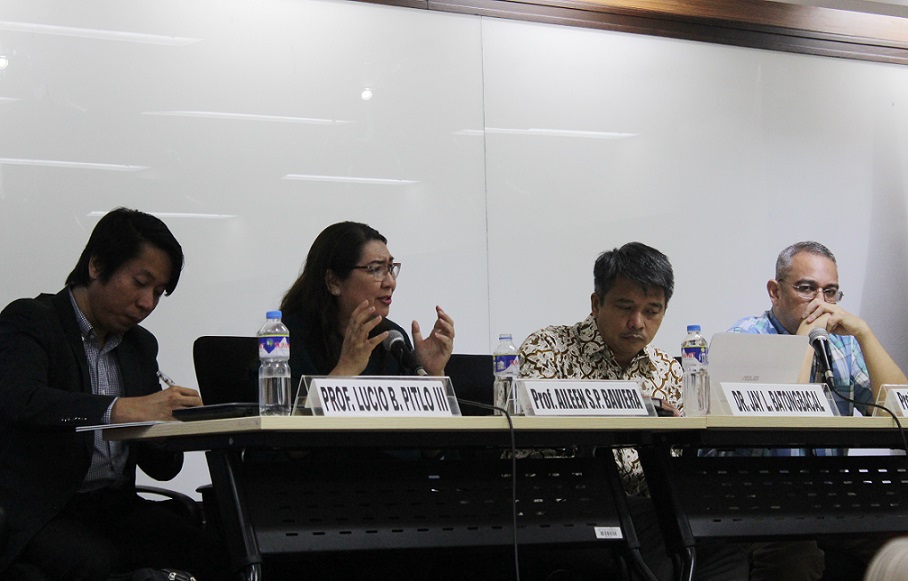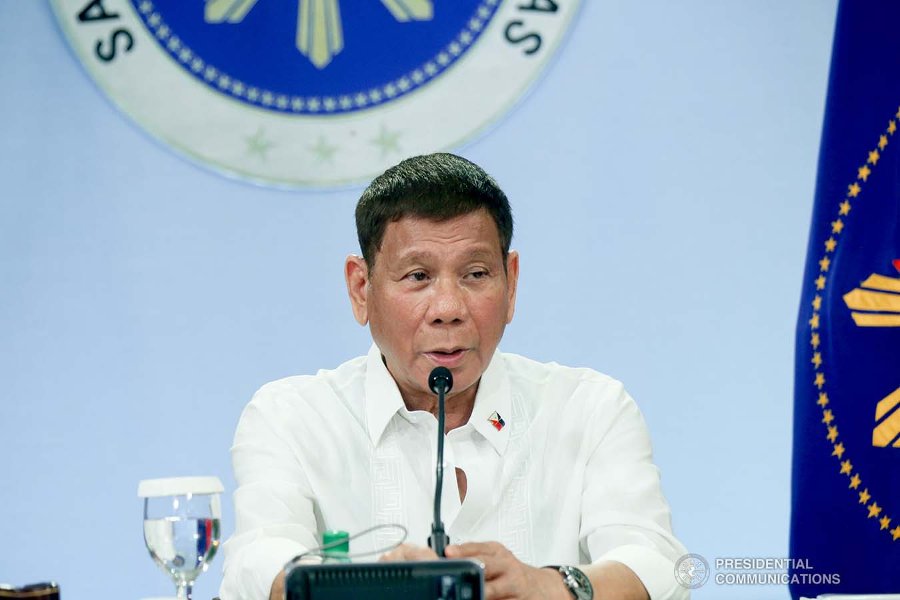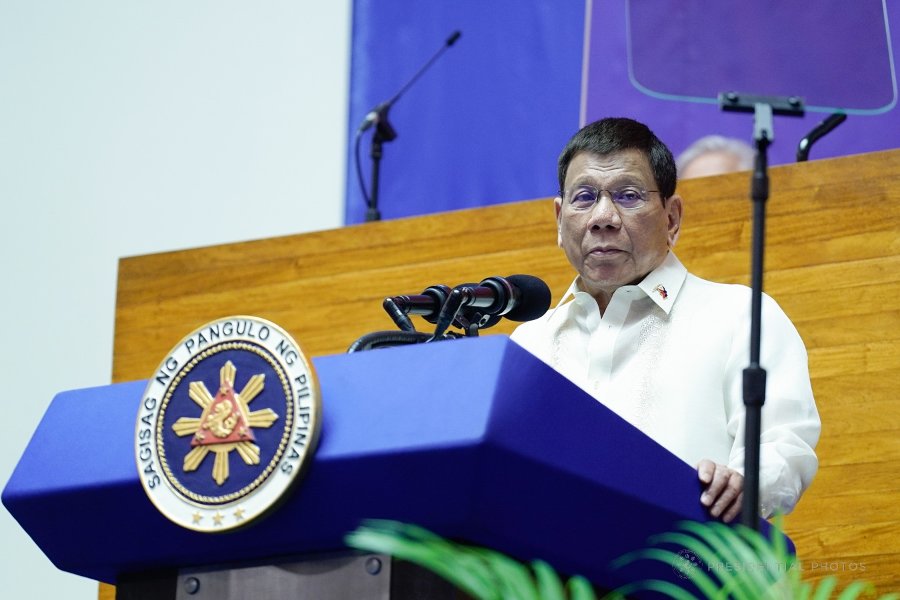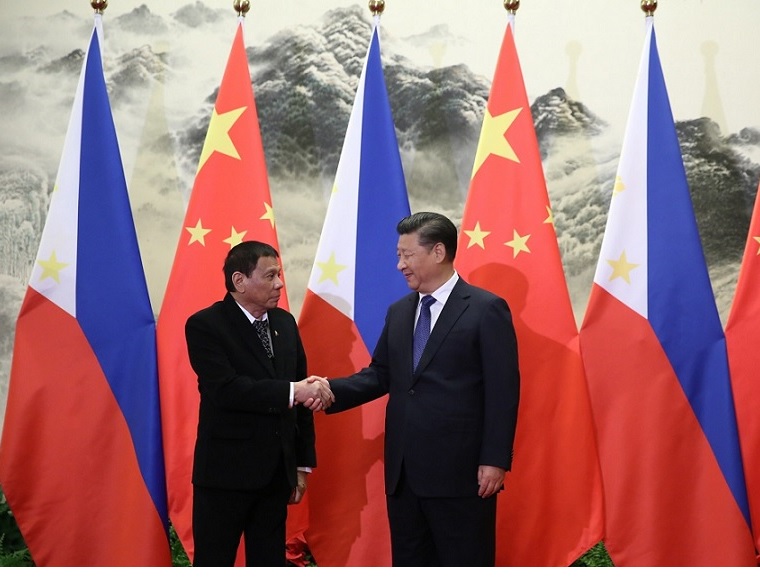 President Duterte is welcomed to China by President Xi Jinping at the start of his state visit in October 2016.
President Duterte is welcomed to China by President Xi Jinping at the start of his state visit in October 2016.
A veteran diplomat and maritime expert said President Duterte has actually been implementing the arbitral ruling in the case against China on the disputed features in the South China Sea by separating the economic from the territorial issues.
Retired ambassador Alberto Encomienda, the executive director of the Center for Archipelagic and Regional Seas Law and Policy Studies of the think tank, Balik-Balangay, said “Bifurcation is necessary as the sovereignty (geo-political) issues is not susceptible of a neat and easy holistic resolution under the United Nations Convention on the Law of the Sea (UNCLOS) acceptable to all five claimant states. On the other hand, a beneficial approach towards geo-economic aspects is easier to achieve and can be implemented immediately outside the geopolitical/sovereignty aspects, granted the existence of good faith and goodwill among all the concerned states.”
“Duterte’s approach to separate the geo-economic aspect from the geo-political issues in the South China Sea has resulted in the establishment of a bilateral dialogue mechanism and ushered good faith and goodwill to conclude a regional cooperation towards an ocean governance framework such as the ASEAN-China Framework on the Code of Conduct in the South China Sea. And it has also stilled the loud noises flagging the freedom of navigation ‘issue,’” said the retired envoy who had served as Secretary General of the Maritime and Ocean Affairs Center of the Department of Foreign Affairs until he retired in 2009.
Encomienda noted that a year into his Presidency, Duterte had visited China twice already, in October 2016 and May this year. He has not raised the arbitral tribunal ruling in either occasion. However, he has vowed over and over again, to do so at the proper time.
“But what he has gained was China’s goodwill that allowed Filipino fishermen access to the contested Scarborough shoal,” he said.
Encomienda’s views jibe with that of Philippine Ambassador to China Chito Sta. Romana has said the Philippine government is taking a “dual-track approach” by separating the territorial dispute issue from the total bilateral relations and deal with them one by one, so other areas of cooperation are not compromised.
Philippines and China already resumed the annual bilateral vice-ministerial political consultation that was suspended after the Philippines filed a unilateral compulsory arbitration case before the PCA at The Hague in 2013. A Bilateral Dialogue Mechanism on the South China Sea has also begun last May.
The Philippines, China, Vietnam, Malaysia, Brunei and Taiwan have overlapping claims over parts of the 3.5 million square kilometer South China Sea.
A draft of the framework of COC for South China Sea, which takes off from the 2002 Declaration of the Code of Conduct in the South China Sea (DOC) being worked on by senior officials of the Association of Southeast Asian Nations (ASEAN) with China
outlines at least five basic undertakings: duty to cooperate, promotion of practical maritime cooperation, self-restraint/promotion of trust and confidence, prevention of incidents, and managing of incidents.
Among its final clauses is to “encourage other countries to respect the principles contained in the COC.”
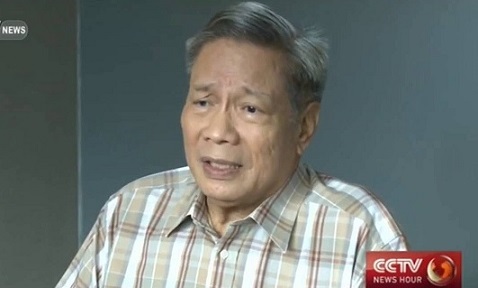
Veteran diplomat and maritime expert Alberto Encomienda
As to Freedom of Navigation (FON) on the waterway where $5.3 billion worth of trade pass annually, Encomienda said, “Freedom of navigation (in the South China Sea) is not a fact on the ground; it is a contrived issue as implicitly acknowledged by its omission in The Hague PCA ruling despite loud noises in the public domain that should have prompted The Hague PCA to take judicial notice.”
He stressed that while the U.S. Navy had carried out FON operations in the disputed waters before, during and after the arbitration case of the Philippines, freedom of navigation has never been disrupted. Even since the beginning of the SCS conflict situation.
“The exercise of freedom of navigation must be insulated from geopolitical strategies and confined to technical aspects of shipping and safety and security of navigation. Confidently, once a regional cooperative mechanism is established for ocean governance in the South China Sea, the matter of freedom of navigation will resolve itself,” Encomienda explained.
However he sees a possible magnified threat to the marine environment and resources due to resulting intensified assertion activities, including “militarization,” expectedly among concerned Parties in the dispute situation.
The Asia Maritime Transparency Initiative on June 29 released new imagery that showed China’s continued construction of military and dual-use facilities on the Spratly Islands while negotiations are ongoing for the ASEAN-China Framework of the Code of Conduct in the South China Sea disputes.
“New missile shelters, radar/communications facilities, and other infrastructure are going in on Fiery Cross, Mischief, and Subi Reefs, suggesting that while the region is engaged in peaceful discussion, China remains committed to developing its power projection capabilities,” AMTI said of its imagery taken from June 16 to 19, 2017.
Encomienda said China’s undertaking of constructive “collateral” activities such as ocean governance and maritime security reduces threats arising from “human activities” in the South China Sea.One such project is the One Belt, One Road.
Launched in 2013 the One Belt One Road is the most ambitious foreign policy initiative of Chinese President Xi Jinping. It is underwriting billions of dollars of infrastructure investment in 60 countries along the old Silk Road and more Chinese projects around the South China Sea that could bolster China’s claims in that area.

